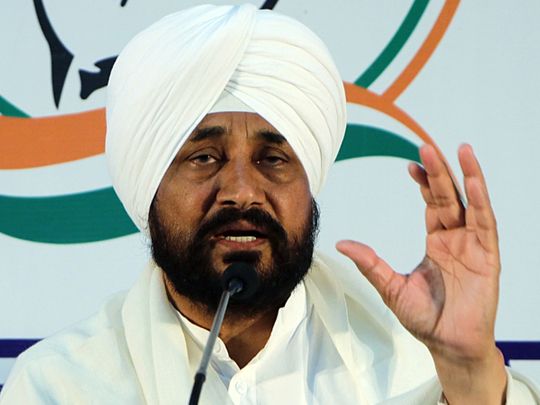
On Feb. 5, Punjabis, along with sub-continentals in many parts of a linguistically and culturally diverse region, celebrated the spring festival, Basant Panchami. Amritsar and Lahore, on either side of the Indo-Pakistan border, are both known for their kite-flying festivals, as are Gurdaspur and Gujranwala, for their Basant Melas or gatherings.
Those interested in worldwide cultural contiguities and convergences will also insist that Basant Panchami and Valentine’s Day, Feb. 14, usually just a few days apart on account of differences in lunisolar and Gregorian calendars, actually commemorate the same rite of approaching spring.
Bollywood song and dance numbers, with lovers prancing in bright yellow mustard fields and sickle wielding damsels cavorting in the background and lending their voices in chorus, have so popularised it in our times.
That is why the irony of anti-incumbency in the electoral fields of India, with three states, Uttar Pradesh (UP), Uttarakhand, and Goa, comes to the fore in this season of romance, with all three states going to the polls on Valentine’s Day.
Voters and leaders often present either a continuing bond or, as is more common, a love affair gone sour. After all, electors’ choice rather than fidelity is the hallmark of a democracy.
The UP model
It would appear that in UP, despite all the odds and local variations, the Yogi Adityanath government still enjoys the confidence of the people. The reasons are not far to seek — public safety, law and order, implementation of developmental schemes, and a decent administration which, whatever the compulsions of politics, treats all stakeholders uniformly when it comes to the benefits of government schemes. Plus, of course, the absence of dynastic or group interests, so obvious in rival parties.
Voters in India’s key state also realise that consonance between centre and state, in this case the both under BJP rule, results in many advantages. Aptly summed up in the phrase “double-engine” sarkar — it suggests a gravy train that does not come to a grinding halt and, despite multiple hurdles, rarely gets loose-shunted or sidetracked.
The same smooth onward ride is not as likely in Uttarakhand and Goa. Despite many defections and much party hopping, the BJP, which is the ruling party, will have to pull out all the stops to avoid being derailed. Anti-incumbency, as voters press the button on the electronic machines today, will definitely resurface.
In Uttarakhand, the BJP changed Chief Ministers twice in less than a year. Will the current CM, Pushkar Singh Dhami, who will turn 47 later this year, stave off the threat to his party and seat? If youth and dynamism are the key, then the BJP may just hold on.
When it comes to Goa, the BJP has been in power for ten years, with four chief ministers, each of whom served at least two years. The late Manohar Parrikar was at the helm for two terms, but now his son is contesting as an independent.
The new entrant in the Goa scenario, as all 40 seats go up for grabs on Valentine’s Day, is Aam Aadmi Party (AAP). That the opposition votes are likely to be split between AAP and the Congress serves BJP’s interests. The BJP may hold on to power, chugging along despite unfavourable signals.
Puzzle of Punjab
This brings us to the puzzle of Punjab, where no one seems to know how to solve. What is going on and what will happen — is anybody’s guess. The Congress infighting is obvious, with former cricketer-comedian and motor-mouth maverick, Navjot Singh Sidhu’s daily headline-grabbing outbursts.
On the other hand, the current CM, Charanjit Singh Channi, who also represents the Sikh scheduled caste, though more sober and restrained, is no lightweight.
His own brother has defected to the BJP and there are corruption charges against his kin, which goes against him. However, he does have an appeal in large sections of underrepresented voters that the other upper-caste candidates lack.
Former CM, Capt. Amrinder Singh, despite his much-publicised exit from the Congress and alliance with the BJP, has been very subdued. When will he and the BJP make their move? With voting scheduled for February 20, Sunday next, it might be too little too late.
On the other hand, the Shiromani Akali Dal (SAD), with its loyal panthic or faith-based vote-bank, may do surprising well. Some sort of alliance or understanding between these entities cannot be ruled out. After all, SAD and BJP were allies for decades.
That leaves us with AAP, the party that many predict will emerge as winner, with more seats, even if not a clear majority. AAP promises a corruption-free government, improvement in education and health care, free or subsidised electricity and water, and an efficient administration. Their current CM face, Bhagawant Mann, is not considered a political heavyweight.
Rumour is that its supremo, Arvind Kejriwal, will actually move to Punjab as the CM if AAP wins, leaving Delhi for his lieutenant, Manish Sisodia. Will the Punjabi voter accept AAP, let alone Kejriwal? A hung assembly will mean instability and what is euphemistically termed “horse-trading,” using money power to muscle defections or garner support.
But to return to the spring-time, romantic metaphor with which we started, no party can take voters for granted. Wooed and won is not the same as secure and wedded. Politics, much more than normal relationships, is based on fickle, rather than enduring, passions.
For long-lasting voter loyalty, there is no substitute for good leadership and able governance. In Punjab, unfortunately, no party at the current hustings can claim to first base advantage when it comes to these desirable attributes in politically suitable grooms.











